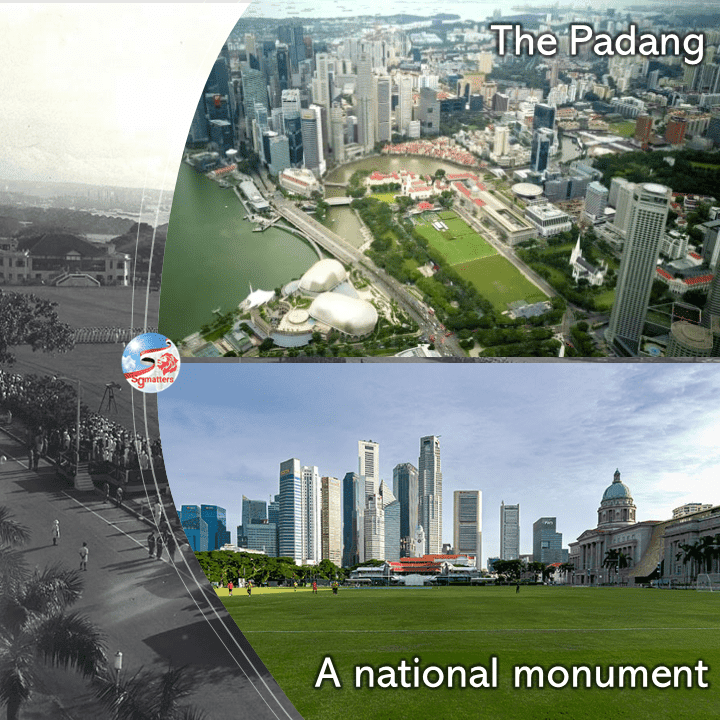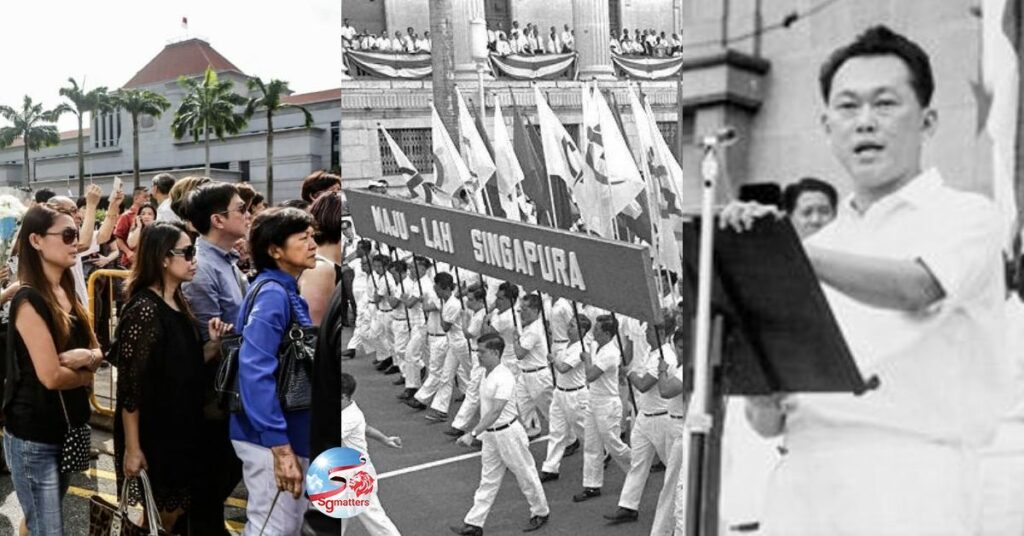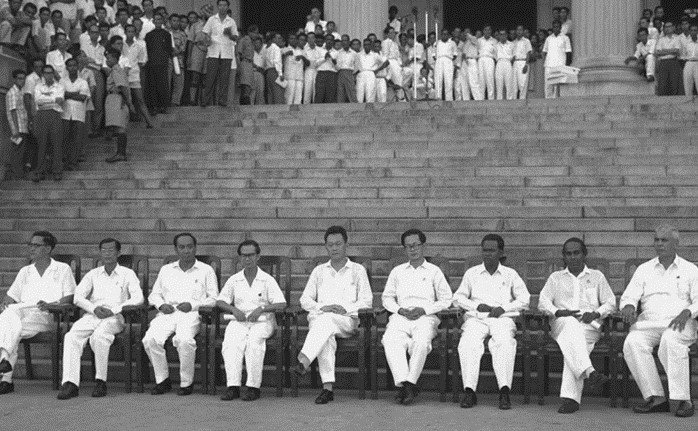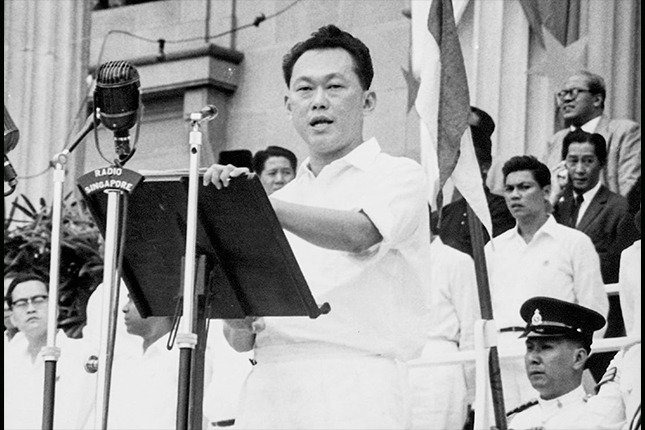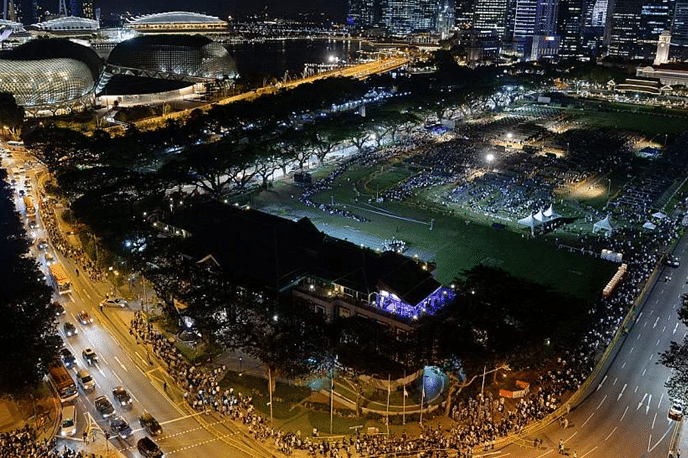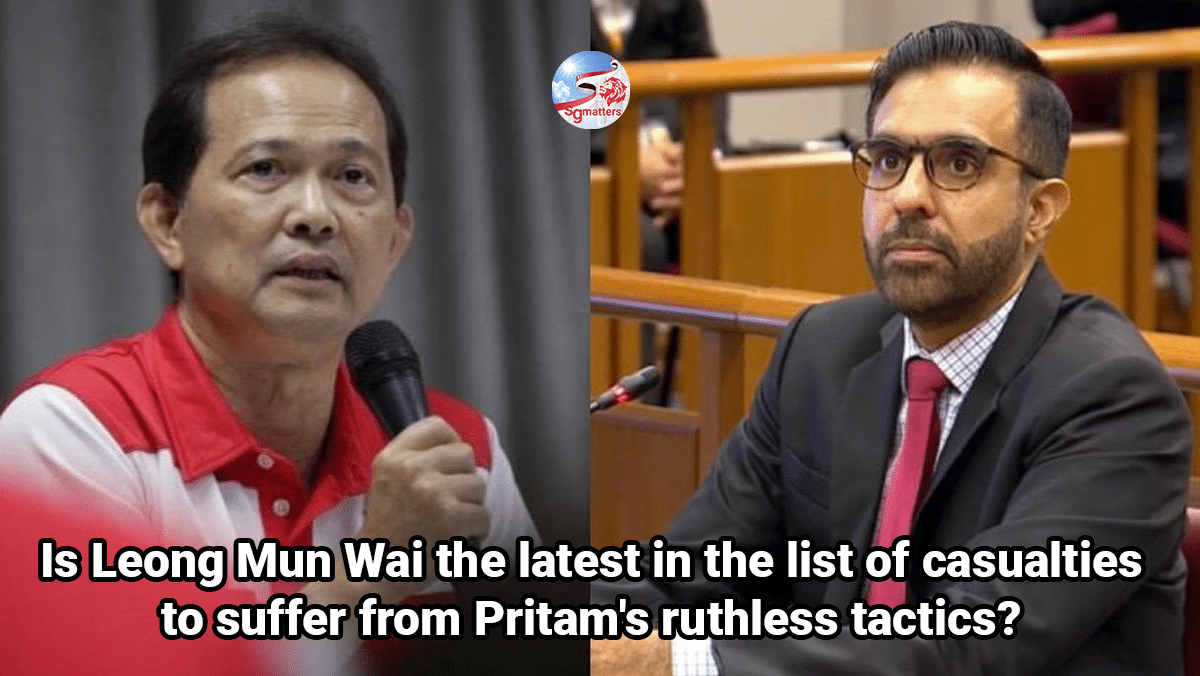Gazetted on Singapore’s 57th birthday, the Padang is Singapore’s 75th national monument.
This open space holds shared memories as a nation, Minister for Culture, Community and Youth Edwin Tong said.
Gazetting it as a national monument protects the site from alteration and change that would affect its character and significance, while allowing it to continue to be a social and community space enjoyed by Singaporeans, Mr Tong said.
‘Padang’ means ‘field’ in Malay.
The Sejarah Melayu (Malay Annals) refers to it as “the plain near the mouth of the river Tamasak [Temasek]”.
When Raffles arrived in 1819, the Plain as it was then known, was simply a swathe of green abutting the beach.
The Padang’s formal appearance was aided by its enlargement in 1859, its encirclement by Connaught Drive and St Andrew’s Road, and its framing by the Singapore Cricket Club on one end and the Singapore Recreation Club on the other.
Site for Japanese imperial power
During the Japanese Occupation, it became the site for the display of Japanese imperial power after the British surrendered on 15 February 1942. The Municipal Building was commandeered by the Syonan Tokubetsu-si (Municipal Administration) as the headquarters of the civil administration.
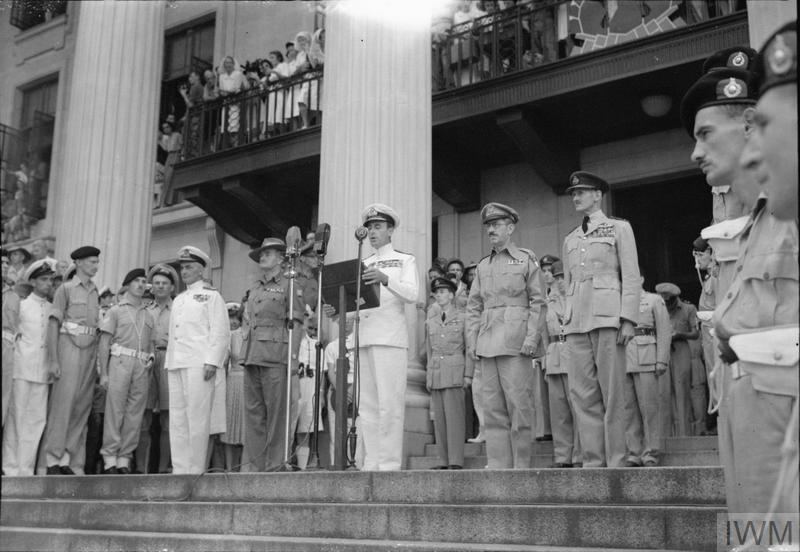
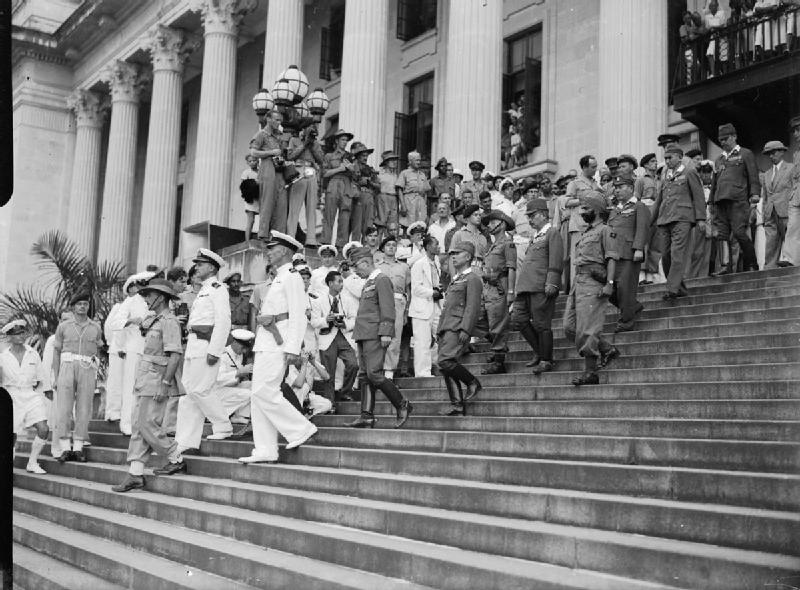
Swearing in of the first cabinet
Inauguration of Yang Di-Pertuan Negara Yusof Ishak
The Padang saw the inauguration of the first Yang Di-Pertuan Negara (Head of State) Yusof Ishak on 3 Dec 1959 after Singapore was granted internal self-governance in 1959. On this day, he unfurled Singapore’s new red and white state flag with its crescent moon and 5 stars.
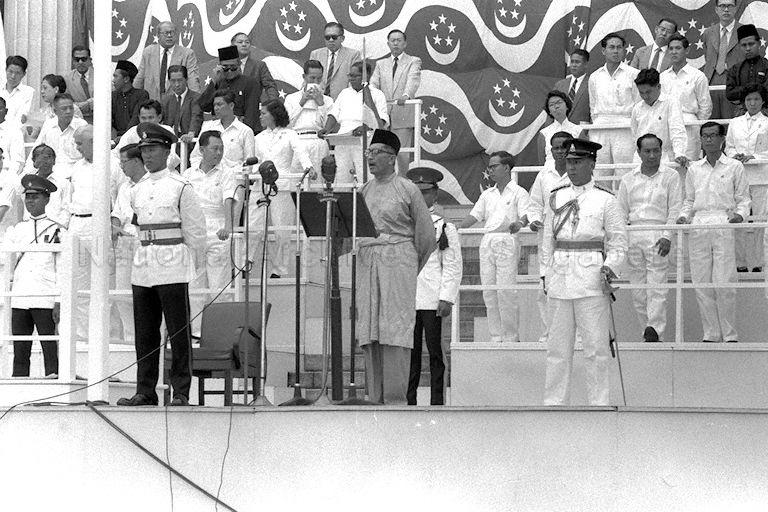
Here at the Padang too, Singapore celebrated its first anniversary as an independent state with a parade on 9 August 1966.
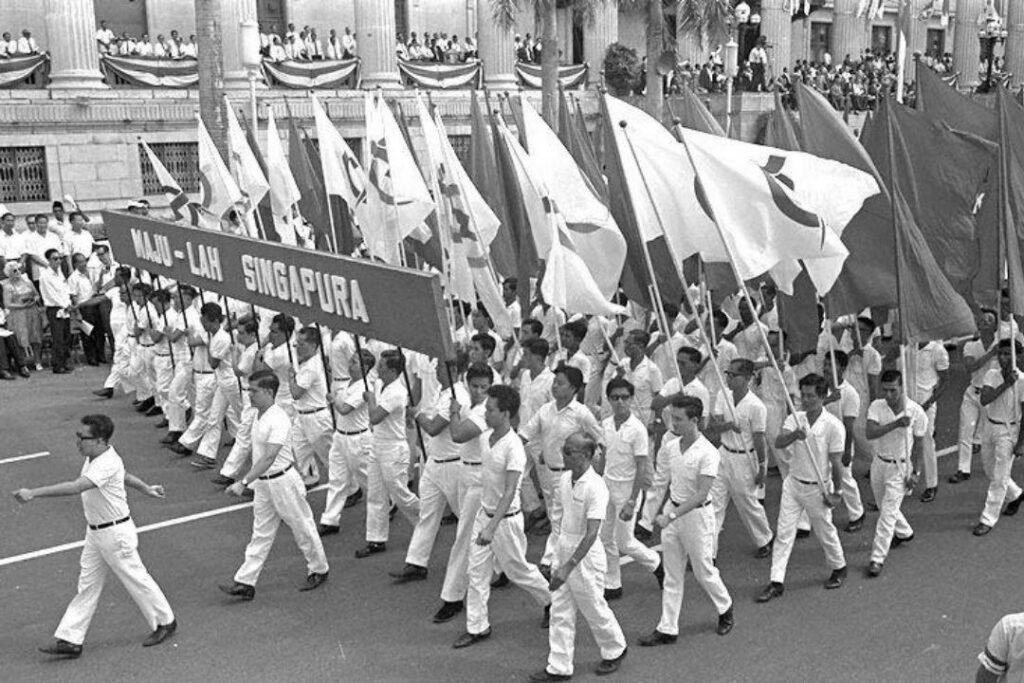
Venue of the largest protest in Singapore’s history
Do you know that the Padang was the venue of the largest organised protest in Singapore’s history? A massive crowd of 120,000 gathered at the Padang on 25 August 1963. The rally was organised by the Chinese Chamber of Commerce to demand reparations from Japan for its wartime atrocities.
In the run-up to this rally, the Special Branch and the Criminal Investigations Department discovered that pro-communist elements planned to exploit the meeting to turn it into a massive demonstration against then Prime Minister Lee Kuan Yew. The entire police force – 5,000 men and troops – was placed on emergency alert.
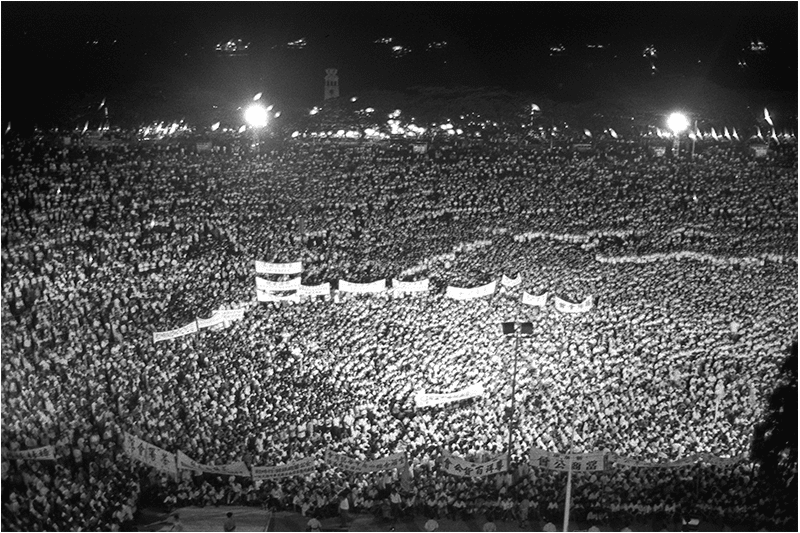
As then Prime Minister Lee Kuan Yew started speaking, the agitators – a few thousands of them – began their organised booing. Mr Lee repeatedly challenged the leaders of the group to “come up to the City Hall and present their case”. None turned up.
Mr Lee then ordered floodlights to be turned on the several thousand pro-communist elements who had “formed a belt from one end of the Padang to the other”. The booing died down and the agitators faded into the crowd. A potential public order disruption had been averted.
Site of the longest queue in Singapore’s history
The Padang was also where the longest queue ever in the history of Singapore was formed. In March 2015, thousands of people arrived at the Padang through the day to endure waits of up to 10 hours for their turn to pay their last respects to founding Prime Minister Lee Kuan Yew in person. At one point, the crowds swelled beyond control and the queue had to be temporarily halted in order to minimise discomfort to children and the elderly. In total, more than 330,000 people joined the queue.
First green space to be listed as national monument
The Padang is the first green, open space on Singapore’s list of national monuments — the highest form of recognition for a structure or site’s significance.
In 2019, Deputy Prime Minister Heng Swee Keat had announced that the Padang would be gazetted as national monuments.
The Preservation of Monuments Act was then amended to broaden the definition of monuments to include sites — defined as any open space, any inland waters, or any area of land containing anything that evidences human activity, present or past, including an intact building or buildings
With the amendment passed in Parliament last November, it paves the way for the Padang to be gazetted as a national monument.
“Generations of people have gathered here and witnessed key milestones in Singapore’s history,” Mr Edwin Tong said.
“It stands as a testament to Singapore’s historical journey, anchoring our Singaporean identity and reflecting our place in the world,” added Mr Tong.
